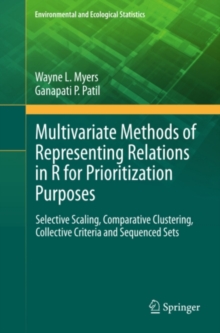
Composite Sampling : A Novel Method to Accomplish Observational Economy in Environmental Studies PDF
by Ganapati P. Patil, Sharad D. Gore, Charles Taillie
Part of the Environmental and Ecological Statistics series
Description
Sampling consists of selection, acquisition, and quantification of a part of the population. While selection and acquisition apply to physical sampling units of the population, quantification pertains only to the variable of interest, which is a particular characteristic of the sampling units. A sampling procedure is expected to provide a sample that is representative with respect to some specified criteria. Composite sampling, under idealized conditions, incurs no loss of information for estimating the population means. But an important limitation to the method has been the loss of information on individual sample values, such as, the extremely large value. In many of the situations where individual sample values are of interest or concern, composite sampling methods can be suitably modified to retrieve the information on individual sample values that may be lost due to compositing. This book presents statistical solutions to issues that arise in the context of applications of composite sampling.
Information
-
Download - Immediately Available
- Format:PDF
- Publisher:Springer US
- Publication Date:25/12/2010
- Category:
- ISBN:9781441976284
Other Formats
- Hardback from £95.55
Information
-
Download - Immediately Available
- Format:PDF
- Publisher:Springer US
- Publication Date:25/12/2010
- Category:
- ISBN:9781441976284










